Renault Master Bus vs Volvo EX90 – Differences & prices compared
Compare performance, boot space, consumption and price in one view.
Find out now: which car is the better choice for you – Renault Master Bus or Volvo EX90?
The Renault Master Bus (Bus) comes with a Diesel engine and Manuel or Automatic transmission. In comparison, the Volvo EX90 (SUV) features a Electric engine with Automatic transmission.
When it comes to boot capacity, the Renault Master Bus offers , while the Volvo EX90 provides 324 L – depending on how much space you need. If you’re looking for more power, decide whether the 180 HP of the Renault Master Bus or the 517 HP of the Volvo EX90 suits your needs better.
In terms of consumption, the values are 8.70 L per 100 km for the Renault Master Bus, and 19.90 kWh for the Volvo EX90.
Price-wise, the Renault Master Bus starts at 36600 £, while the Volvo EX90 is available from 71700 £. Compare all the details and find out which model fits your lifestyle best!
Renault Master Bus
The Renault Master Bus offers a spacious and flexible interior, making it an excellent choice for transporting groups comfortably. It features a robust design and advanced safety systems, ensuring a secure ride for all passengers. With its efficient diesel engine, the Master Bus combines power with impressive fuel economy, appealing to both businesses and private users alike.
detailsVolvo EX90
The Volvo EX90 represents a new era of luxury electric vehicles, combining sophisticated design with cutting-edge technology. Its interior offers a serene environment, enhanced by premium materials and a state-of-the-art infotainment system that ensures both comfort and connectivity. Safety remains paramount, with the EX90 featuring advanced driver assistance features to provide peace of mind on every journey.
details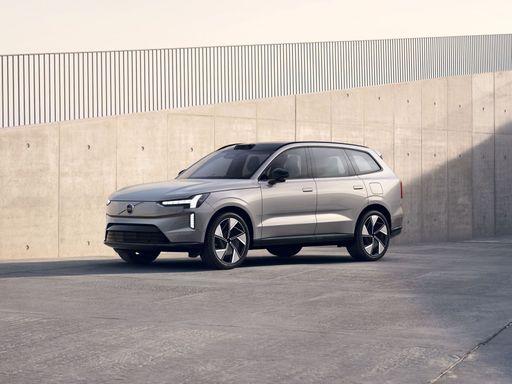 @ media.volvocars.com
@ media.volvocars.com
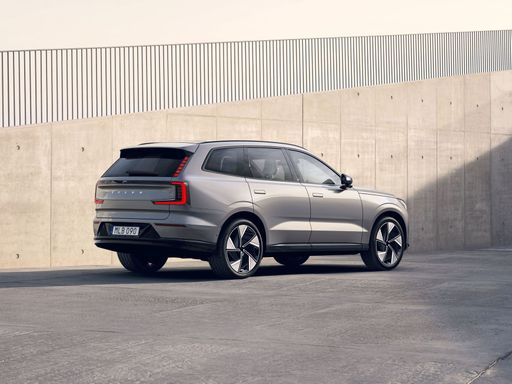 @ media.volvocars.com
@ media.volvocars.com
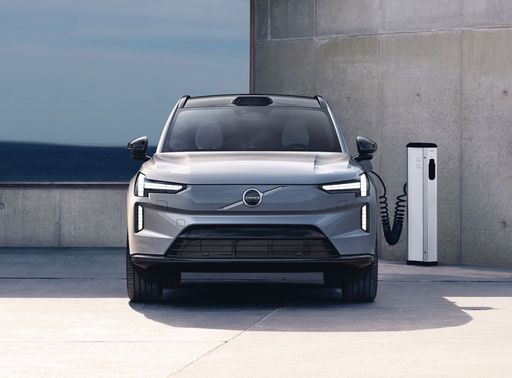 @ media.volvocars.com
@ media.volvocars.com
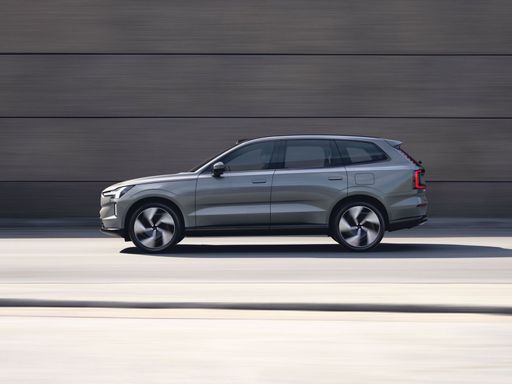 @ media.volvocars.com
@ media.volvocars.com
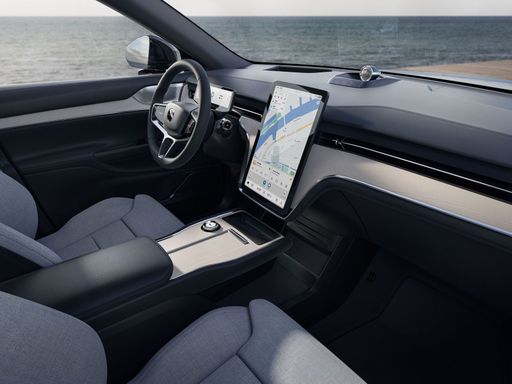 @ media.volvocars.com
@ media.volvocars.com
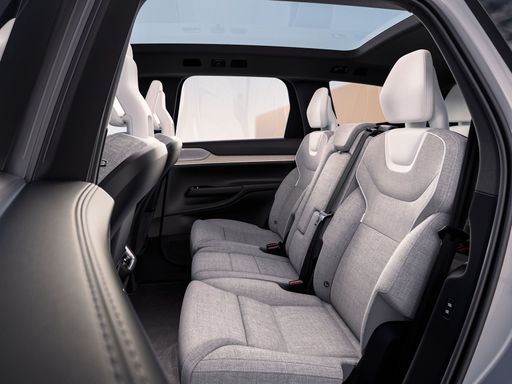 @ media.volvocars.com
@ media.volvocars.com

|
|
|
|
|
Costs and Consumption |
|
|---|---|
|
Price
36600 - 43200 £
|
Price
71700 - 92100 £
|
|
Consumption L/100km
8.7 - 10.7 L
|
Consumption L/100km
-
|
|
Consumption kWh/100km
-
|
Consumption kWh/100km
19.9 - 20.8 kWh
|
|
Electric Range
-
|
Electric Range
580 - 632 km
|
|
Battery Capacity
-
|
Battery Capacity
101 - 107 kWh
|
|
co2
227 - 280 g/km
|
co2
0 g/km
|
|
Fuel tank capacity
105 L
|
Fuel tank capacity
-
|
Dimensions and Body |
|
|---|---|
|
Body Type
Bus
|
Body Type
SUV
|
|
Seats
6 - 9
|
Seats
5 - 7
|
|
Doors
4
|
Doors
5
|
|
Curb weight
2189 - 2361 kg
|
Curb weight
2579 - 2787 kg
|
|
Trunk capacity
-
|
Trunk capacity
310 - 324 L
|
|
Length
5075 - 5575 mm
|
Length
5037 mm
|
|
Width
2070 mm
|
Width
1964 mm
|
|
Height
2290 - 2486 mm
|
Height
1744 mm
|
|
Payload
939 - 1254 kg
|
Payload
421 - 611 kg
|
Engine and Performance |
|
|---|---|
|
Engine Type
Diesel
|
Engine Type
Electric
|
|
Transmission
Manuel, Automatic
|
Transmission
Automatic
|
|
Transmission Detail
Manual Gearbox, Automated Manual
|
Transmission Detail
Reduction Gearbox
|
|
Drive Type
Front-Wheel Drive
|
Drive Type
Rear-Wheel Drive, All-Wheel Drive
|
|
Power HP
135 - 180 HP
|
Power HP
279 - 517 HP
|
|
Acceleration 0-100km/h
-
|
Acceleration 0-100km/h
4.9 - 8.4 s
|
|
Max Speed
150 - 165 km/h
|
Max Speed
180 km/h
|
|
Torque
360 - 400 Nm
|
Torque
490 - 910 Nm
|
|
Number of Cylinders
4
|
Number of Cylinders
-
|
|
Power kW
99 - 132 kW
|
Power kW
205 - 380 kW
|
|
Engine capacity
2299 cm3
|
Engine capacity
-
|
General |
|
|---|---|
|
Model Year
2023
|
Model Year
2024 - 2025
|
|
CO2 Efficiency Class
G
|
CO2 Efficiency Class
A
|
|
Brand
Renault
|
Brand
Volvo
|
Renault Master Bus
Discovering the Renault Master Bus: A Versatile Journey Ahead
Renault's Master Bus is a testament to the brand's commitment to delivering versatile and robust vehicles that cater to a variety of needs. Whether for business or personal use, the Renault Master Bus stands out with its combination of performance, space, and innovation. Join us as we delve into the technical details and pioneering features that define this remarkable vehicle.
Under the Hood: Power Meets Efficiency
The heart of the Renault Master Bus is its diesel engines, offering a choice between manual and automatic transmissions. With a power range of 135 to 180 PS, the Master Bus ensures robust performance for both city driving and long-distance travel. The engine provides remarkable torque between 360 to 400 Nm, enhancing the driving experience with smooth acceleration and power delivery across various terrains.
Fuel efficiency is a crucial consideration for large vehicles, and the Master Bus doesn't disappoint, offering fuel consumption figures ranging from 8.7 to 10.7 L/100km. The front-wheel-drive system not only aids in reducing fuel consumption but also provides stability and traction, especially in challenging driving conditions.
Spacious Design and Comfort
Space is undoubtedly one of the highlights of the Renault Master Bus. With configurations that accommodate between 6 to 9 seats, the vehicle is designed to cater to a wide array of passenger or cargo needs. Dimensions range between 5075 to 5575 mm in length, 2070 mm in width, and 2290 to 2486 mm in height, providing ample room for comfort and utility.
The bus ensures a smooth ride, with an emphasis on passenger comfort and safety, making it ideal for long journeys. Whether for work commutes or family outings, the Master Bus's design caters to everyone’s needs.
Innovation and Safety Features
Renault continues to push boundaries by integrating advanced technology and safety features into the Master Bus. Features designed to assist drivers include state-of-the-art navigation and connectivity systems, ensuring that drivers remain informed and passengers remain connected throughout their journey.
Safety is also paramount, with multiple airbags and advanced braking systems in place, offering peace of mind on every trip. The Master Bus is equipped to handle the demands of modern travel, delivering reliability and security in equal measure.
Conclusion: The Complete Package
The Renault Master Bus is a masterclass in efficiency, comfort, and innovation. Its blend of powerful performance, spacious interiors, and cutting-edge technology makes it a standout choice for those in need of a versatile transportation solution. Whether for business or leisure, the Master Bus promises a journey that's not just about getting from point A to point B, but enjoying the ride along the way.
Renault continues to drive forward with its commitment to innovation and quality, and the Master Bus stands as a proud testament to this ethos, ready to take on the roads with assurance and style.
Volvo EX90
The New Volvo EX90: A Leap into the Future of Automobiles
The Volvo EX90 marks a significant step forward in automotive technology and design. As part of Volvo's commitment to sustainability and performance, this all-electric SUV combines cutting-edge technology with the brand’s renowned safety and reliability. Let's dive into the technical details and innovations that make the Volvo EX90 a standout in its class.
Performance and Range: Power Meets Efficiency
The Volvo EX90 offers a range of powertrains, catering to various performance preferences. With power outputs ranging from 279 to 517 PS, the EX90 ensures robust driving dynamics regardless of the selected variant. The vehicle's electric efficiency is underscored by consumption figures between 19.9 and 20.8 kWh/100 km, providing an impressive electric range of up to 614 km on a single charge.
The EX90's battery capacity, ranging from 101 to 107 kWh, is harmoniously paired with its drivetrain configurations, available in both rear-wheel and all-wheel drive models. These options allow a balance between efficiency and driving pleasure, with acceleration from 0-100 km/h in as little as 4.9 seconds.
Innovative Technologies for a Safer Drive
Volvo has always been synonymous with safety, and the EX90 is no exception. Equipped with advanced driver assistance systems, the vehicle includes features such as adaptive cruise control, lane keeping assistance, and a 360-degree camera system. These technologies work together to enhance comfort and security on the road.
Moreover, the EX90 utilises LiDAR technology, enabling it to detect and respond to the surrounding environment more accurately. This technology is pivotal in Volvo's ambition to make its cars safer and is a step toward fully autonomous driving.
Interior Elegance: Where Comfort Meets Functionality
The interior of the Volvo EX90 is a sanctuary of luxury and innovation. Available in four different trims, including the Core, Plus, and Ultra variations, it promises comfort and versatility, seating between five and seven passengers.
The cabin features a sleek design with a central touchscreen that integrates Volvo's latest infotainment system, ensuring connectivity and entertainment are at your fingertips. High-quality materials, meticulous craftsmanship, and thoughtful ergonomics create an inviting atmosphere for both driver and passengers.
Sustainability: A Commitment to Reducing Emissions
As part of Volvo’s sustainability mission, the EX90 underscores the brand's goal of reducing its carbon footprint. With zero tailpipe emissions, the EX90 stands as a testament to Volvo’s eco-conscious engineering. The car's CO2 efficiency justifies its A-grade in environmental standards.
Volvo's dedication to sustainable materials is evident in the EX90's interior, where recycled content is seamlessly integrated into its luxurious design, offering an eco-friendly yet sophisticated driving experience.
Conclusion: The Future is Electric
The Volvo EX90 is much more than just an electric vehicle; it's a glimpse into the future of sustainable mobility. By marrying performance with advanced safety features and a commitment to environmental responsibility, the EX90 sets a benchmark for what the modern SUV can be. For drivers looking to invest in a vehicle that's both future-ready and grounded in safety, the Volvo EX90 emerges as a compelling choice.
The prices and data displayed are estimates based on German list prices and may vary by country. This information is not legally binding.
